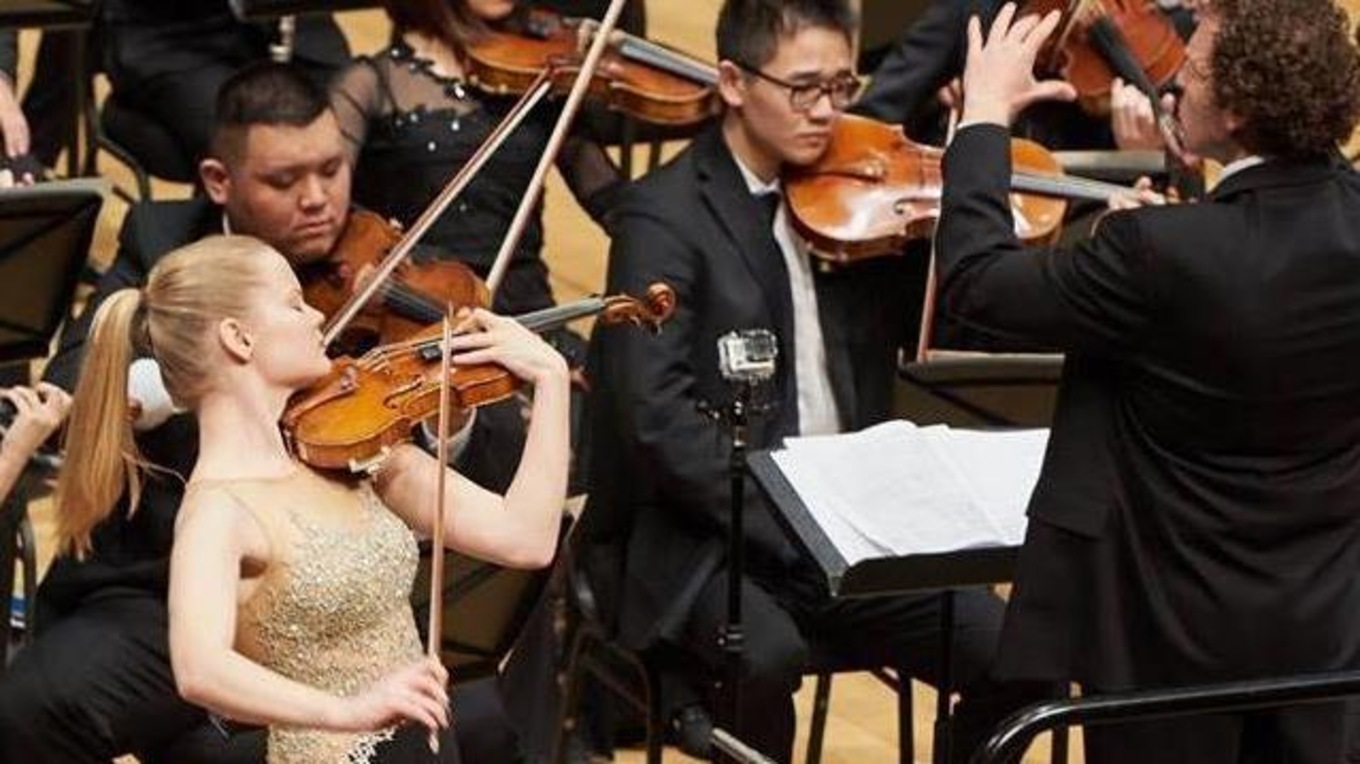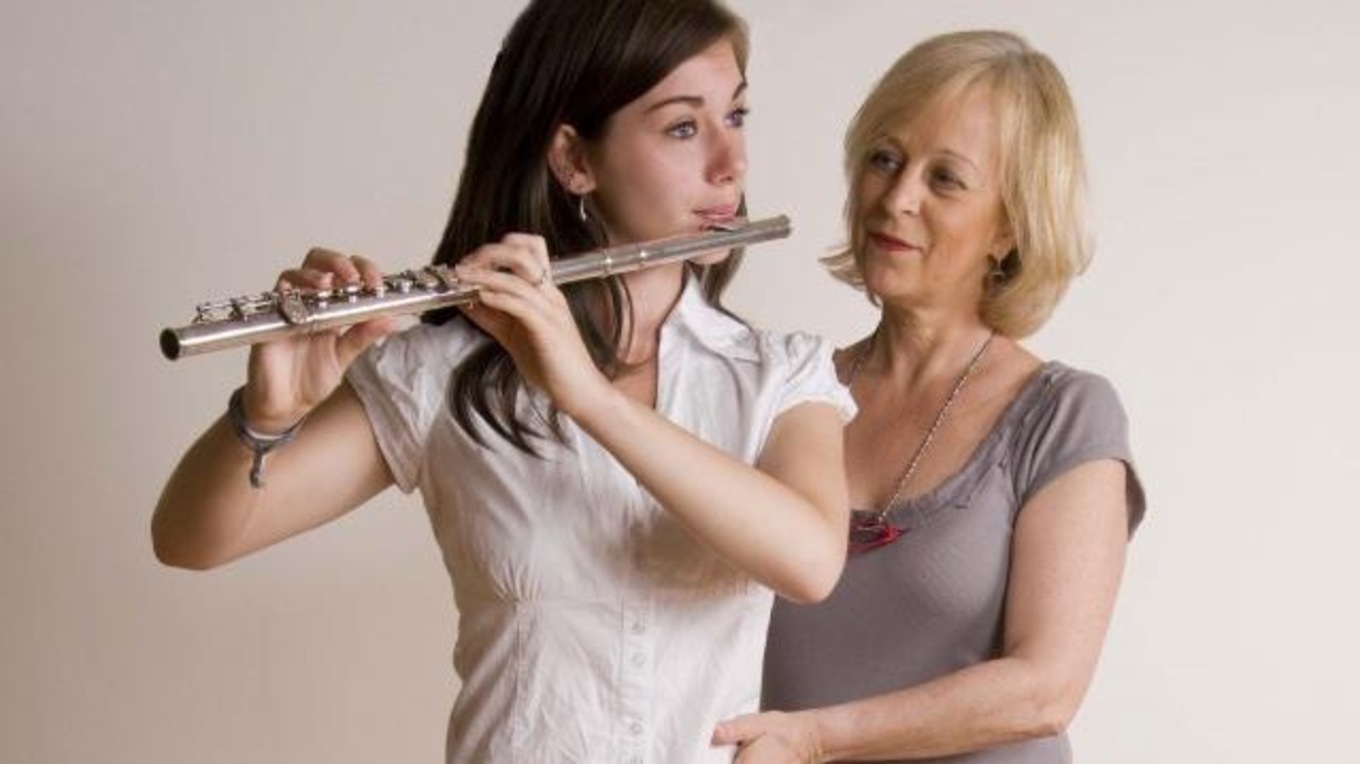Written by Claire Motyer, violin student and coordinator of Musicians' Health Awareness Week at the Schulich School of Music of McGill University.
“This injury not only stopped me from going on a European tour with the National Youth Orchestra of Canada,” confides 21-year-old violinist Emma Morrison, “but it also inhibited me from pursuing my second year in violin performance at the University of Toronto.”
Last year, Morrison developed a playing-related injury during her first year at U of T. The demands and stress of her studies, coupled with preparing for a solo performance of Barber’s Violin Concerto with the Toronto Symphony Youth Orchestra, caused pain in her shoulder and arms.

Emma Morrison plays Samuel Barber’s Violin Concerto with the Toronto Symphony Youth Orchestra under Shalom Bard at Koerner Hall in April 2016. (Malcolm Cook/Toronto Symphony Orchestra)
Originally misdiagnosed as a nerve injury, Morrison’s condition was discovered several months later to be muscle deterioration. She had to put down her violin for the first time since she was eight years old.
“Although my injury was physical, it took a great toll on my mental and emotional health,” she reflects. “My family and friends continue to worry about my well-being, not only physically, but mentally — because they understand how essential the violin is to my expression of self.”
Over the past few months, Morrison has been strengthening her body with a trainer so that she can eventually return to playing, while also learning more about herself away from the instrument.
“I have been able to establish myself outside of my identity as a violinist, which has made me more confident and happy,” she says, looking on the bright side. “When I am healthy enough to return to the instrument, I am certain that I will have a lot more to offer to my art, simply because I now feel like I have more to offer as a person.”
Epidemic
Morrison is not alone. Playing-related injuries are approaching epidemic levels. A 2012 Australian study on that country’s professional symphony orchestras showed that 84 per cent of musicians had experienced injuries in their lifetime and 50 per cent were currently having pain while playing.
Why is this happening?
“Since the most common mechanism of injury in professional musicians is overuse happening over weeks, even months, rather than punctual trauma, it is difficult to identify one leading cause,” notes Pauline Beaud, a physiotherapist and massage therapist in Montreal. “In prevention literature, we talk more about a combination of risk factors.”
Some risk factors she identifies include: inadequate knowledge of the body and how to lead a healthy lifestyle; anything putting more stress on the body, such as posture, technique and inadequate practice breaks; consulting a health practitioner too late; and environmental or emotional stress.
In today’s music schools, these risks are widespread. Many incoming students enter rigorous performance programs before their technique is fully developed. Commitments like orchestra, chamber music, solo repertoire and auditions require many hours of practice each day, while students are also adjusting to a change in environment, a new teacher and a full academic load.
In addition to those risks, injured musicians hesitate to speak about these health issues for fear of repercussions. Will they appear weak if they can’t keep up with rehearsals? Will they be convinced to drop out or change their degree programs? How can they stay healthy while improving their playing? These worries — and pressure from peers or institutional authorities — lead them to question whether they are fit to be musicians, causing a spiral of self-doubt.
‘We’ve got a lot of work to do’
Conservatories and universities in Canada have only recently started addressing this situation by redesigning their curricula and providing health services specific to musicians.
“We’ve got a lot of work to do,” admits Dr. John Chong, medical director of the Musicians’ Clinics of Canada and past president of the Performing Arts Medicine Association (PAMA).
Chong and violinist Stephen Sitarski have designed a performance awareness course at the Glenn Gould School at the Royal Conservatory of Music in Toronto, the only one of its kind in Canada that’s mandatory for all undergraduate and graduate students. The course focuses on injury prevention and teaches skills to prevent occupational health problems.
Chong is also organizing PAMA’s Canadian Regional Meeting at the University of Toronto on Feb. 11 and 12, 2017. At this meeting, saxophonist Phil Dwyer and other leading performers will share stories on musicians’ health, and there'll be presentations by experts like orthopedic surgeon Nancy Kadel on dance medicine and author/osteopath Jennie Morton on “authentic performance.” Students are encouraged to attend.

A flutist receives treatment from a specialist in Alexander Technique. (Alexander Technique Express)
Many elite music schools in Canada, such as the Glenn Gould School, McGill University’s Schulich School of Music, Wilfrid Laurier University and Memorial University, offer Alexander Technique and Body Mapping, which are both widely used among professional musicians to increase body awareness, decrease tension and prevent injury. They also offer physiotherapy, massage therapy and counselling and mental health services.
While these services are essential, educators and administrators are now realizing that they’re not enough and have started readjusting their curricula as well. Some schools, such as McGill University, have begun to offer courses similar to the one at the Glenn Gould School. One key issue that still needs to be addressed, however, is the playing load that is expected of students. Without adequate rest, many student musicians are still at risk.
But Beaud is optimistic about a shift in perception toward more awareness for musicians’ health.
“The classical music world draws great strength from its loyalty to tradition; however, this may lead to resisting positive change at times,” she says. “I am optimistic that the spectacular progress in communication media will help everyone readjust their perception of how a successful music career is prepared, and consequently practiced for.”
PAMA’s 2017 Regional Meeting, “Fake It Until You Can’t Make It,” takes place Feb. 11-12 at the University of Toronto’s Faculty of Music.
Feb. 13-19 is Musicians’ Health Awareness Week at McGill University’s Schulich School of Music.
Explore more:
Listen to Paolo Pietropaolo's new series, Orchestral Tales
Watch Cameron Crozman play Bach on his $12 million Stradivari cello

